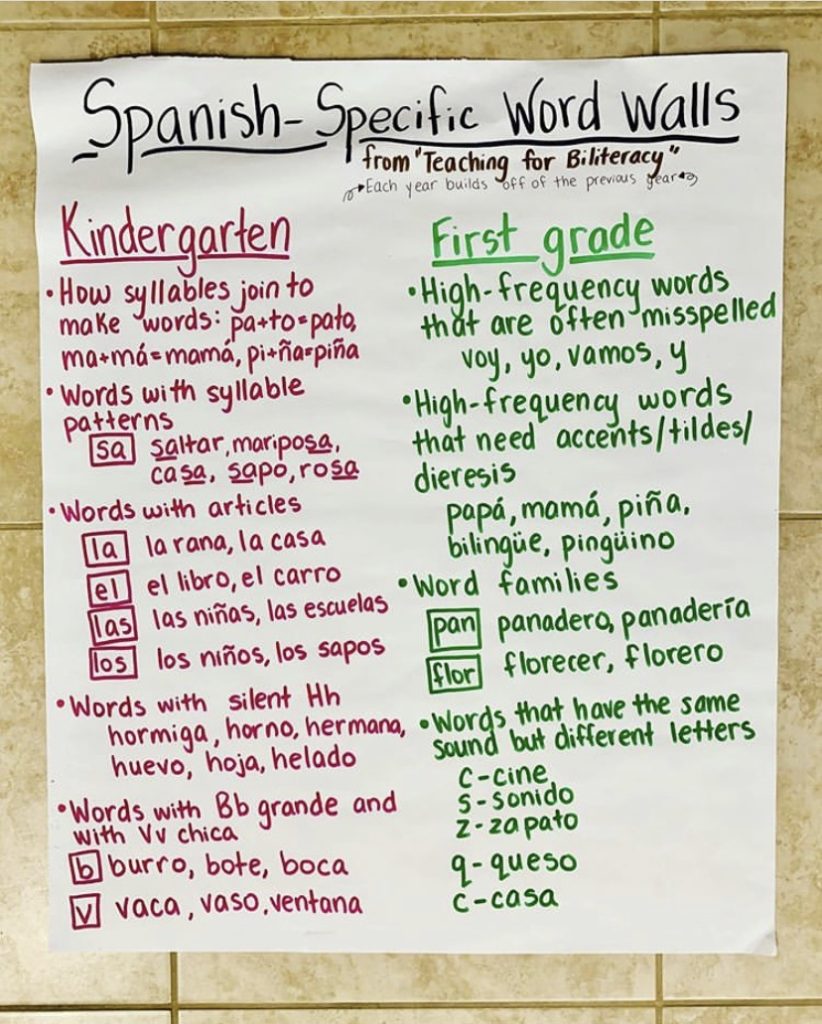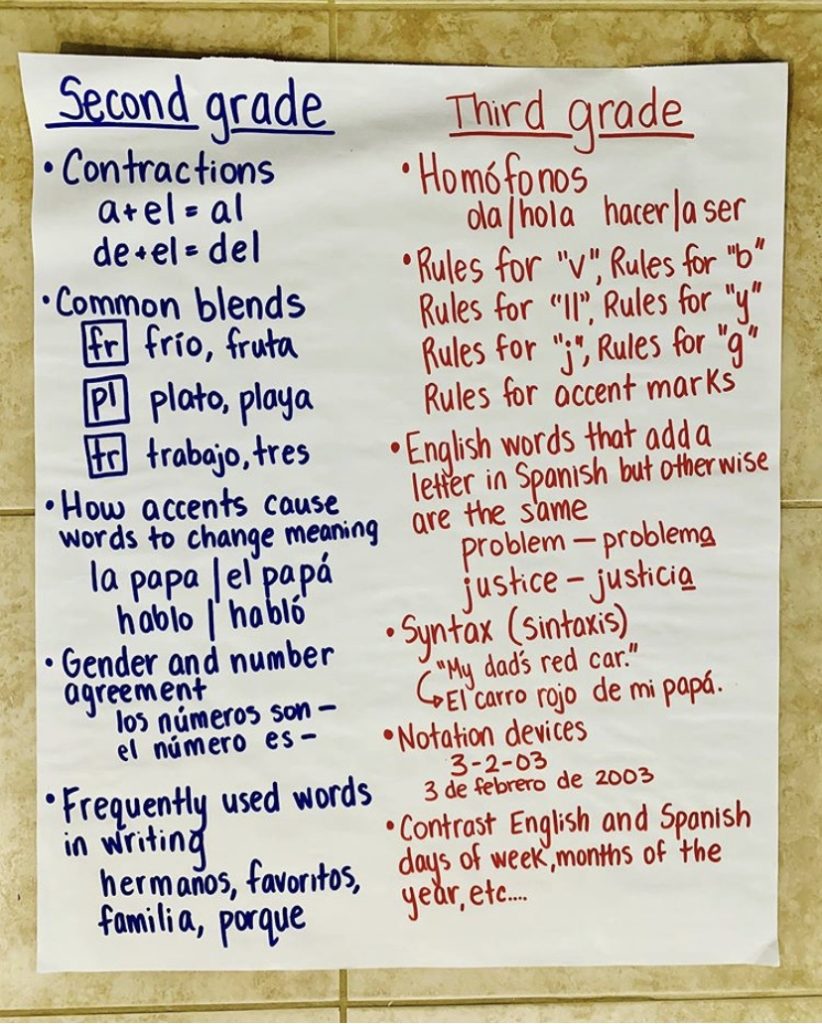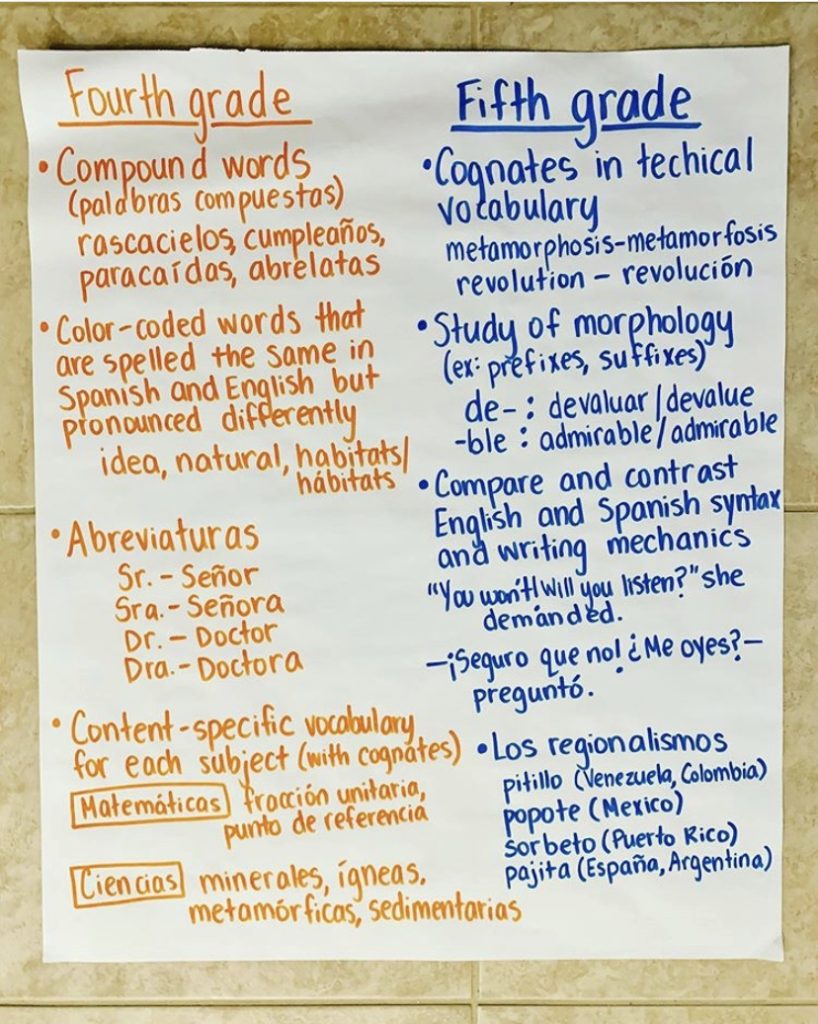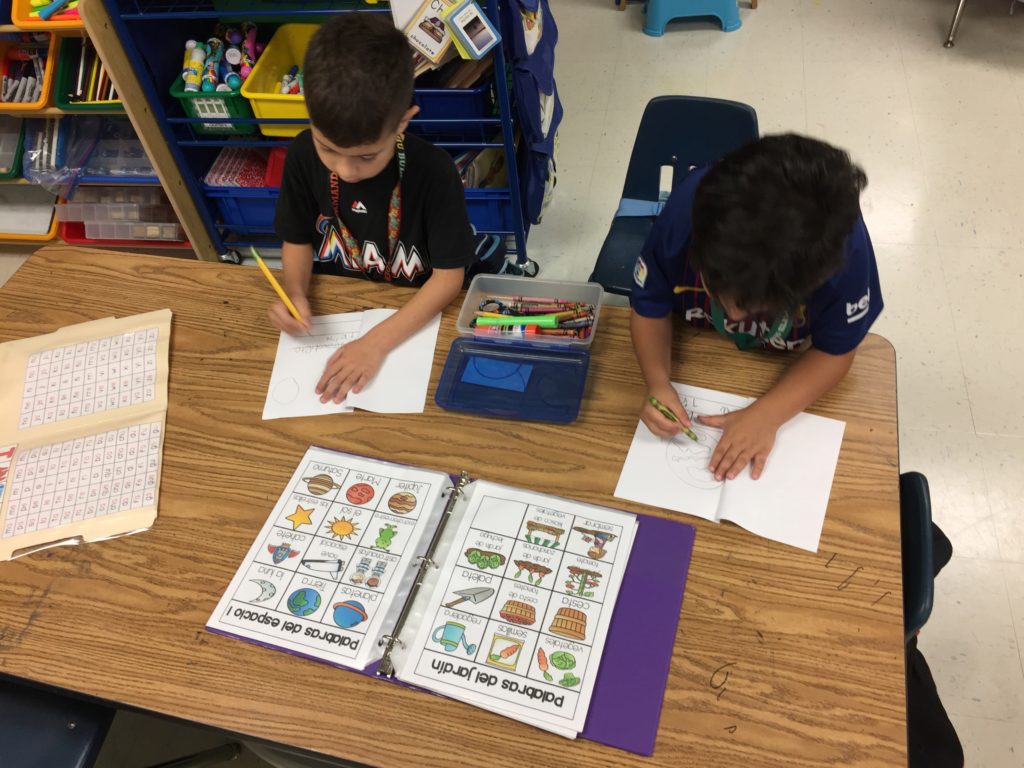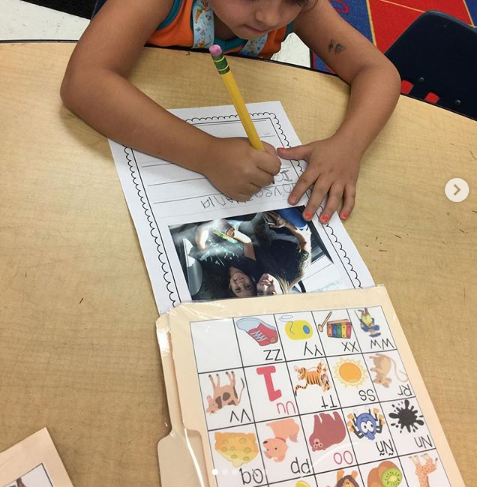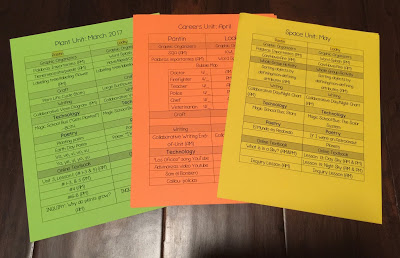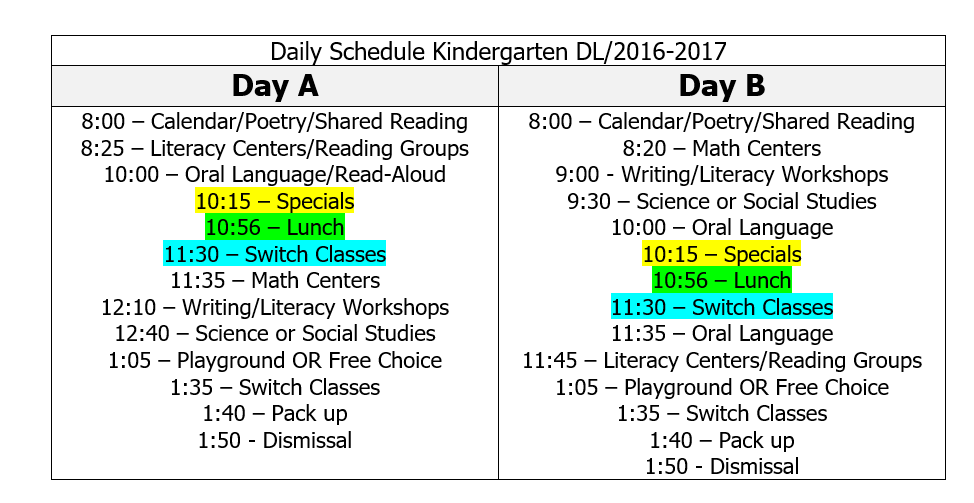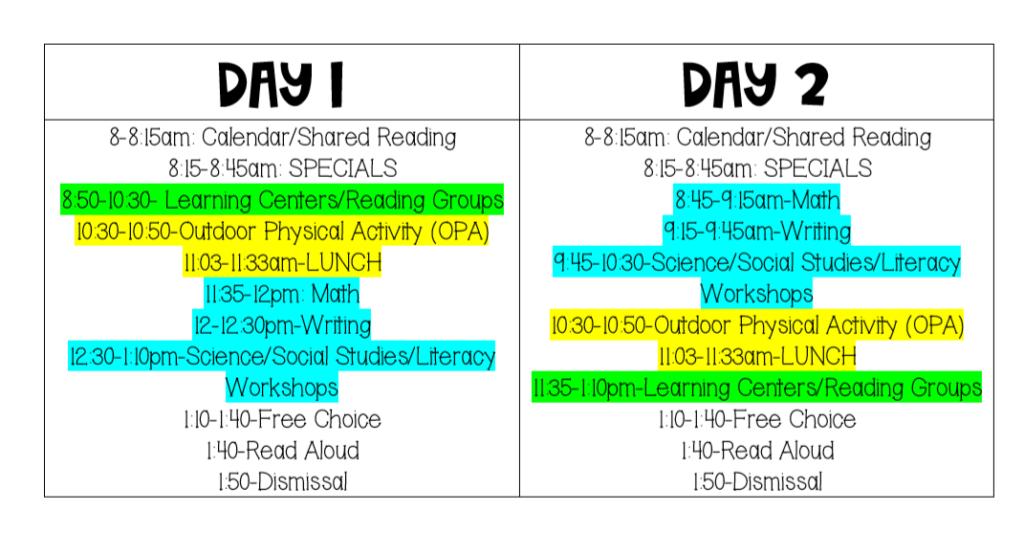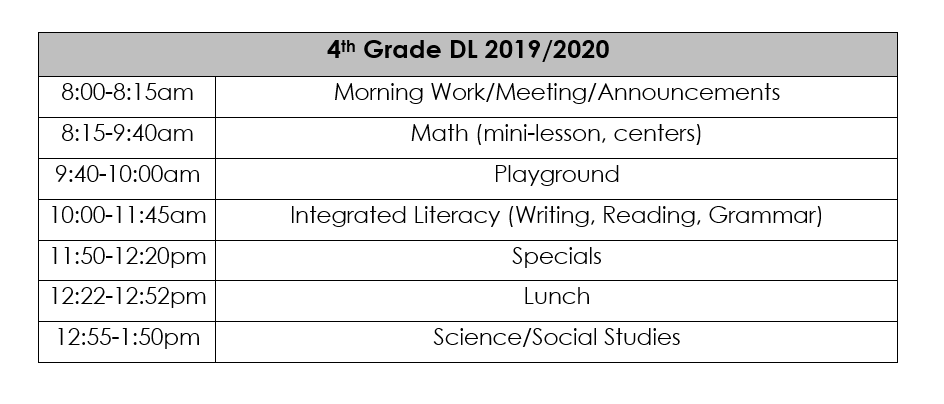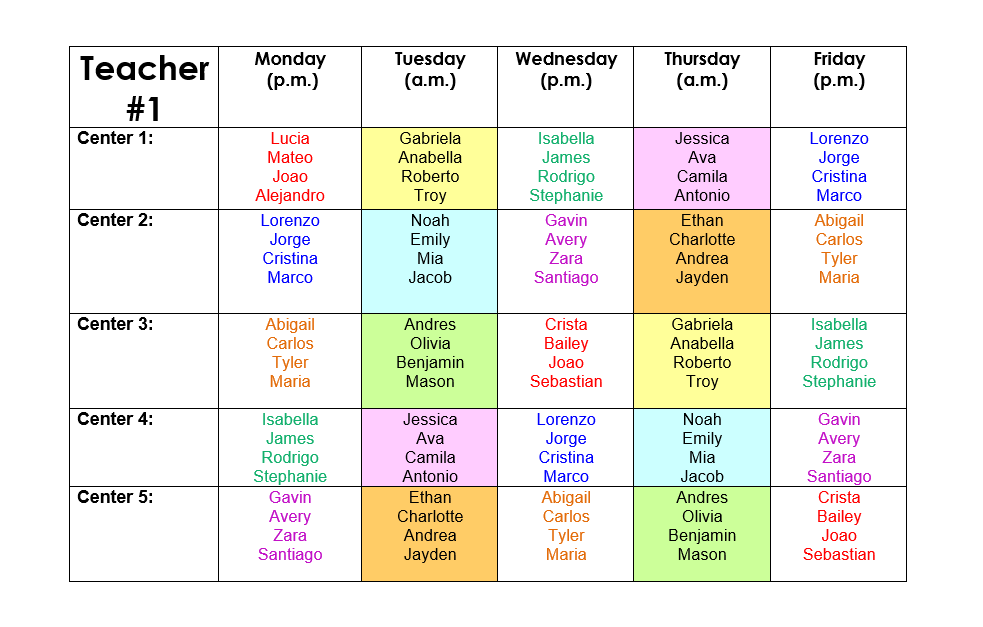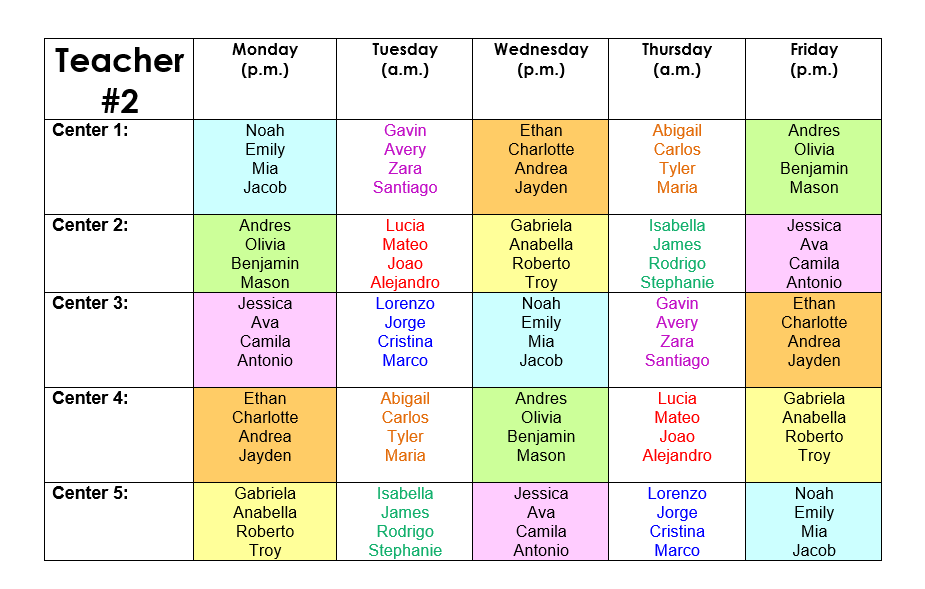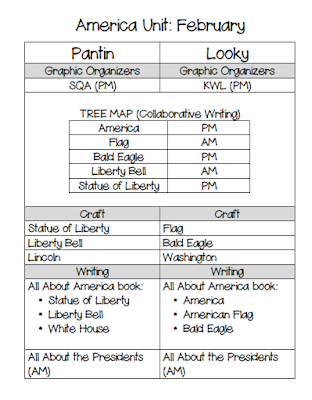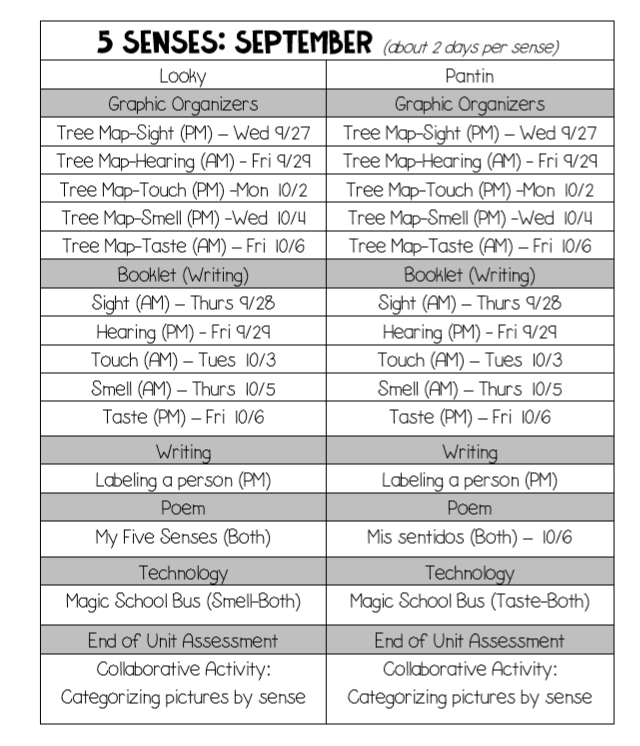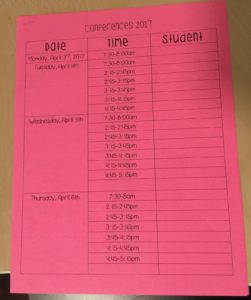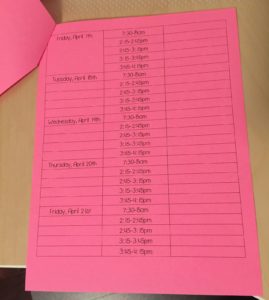
Word walls can be utilized as an integral part of a Dual Language classroom. While in English classrooms, word walls usually are displayed for younger grades as an Alphabet Word Wall, often Spanish language teachers believe that their word walls should mirror those of the English classrooms. However, we must recognize the differences between the languages and understand that an alphabetic word wall in Spanish wouldn’t actually be helpful or useful for our students. Instead, word walls in Spanish classrooms should reflect the Spanish language and should reflect the grade-level language support your students need. It’s important for our word walls to build on students’ language knowledge in content area vocabulary and language structures. The best way to think about how to create a word wall is to look at the Spanish language standards for your grade level and decide what language structures and language skills are the most crucial for your grade level. From there, you can decide what types of word walls would be most useful for your children. I also want to emphasize two things – (1) you can have more than one type of word wall in your classroom and (2) word walls are most effective when they are interactive and student-centered/student-made.
In “Teaching for Biliteracy”, authors Cheryl Urow and Karen Beeman share different types of word walls that would be more appropriate for Spanish dual language classrooms. Here are some suggestions from their book on different grade-level word wall ideas:
When I taught Kindergarten Dual Language, I had an interactive syllable word wall and a student-created cognate word wall. The interactive syllable word wall was organized starting with the first syllable combinations we learned (ma, me, mi, mo, mu) and then the next combination we learn and so for so the wall was organized in the sequence that I taught the syllable combinations. As we learned vocabulary for that syllable combination, I would Velcro cards with those vocabulary words (and of course with an image of the word!) and students would use this wall for their writing and reading. They were able to grab the word off the Velcro and take it to their seats to use during their writing. The cognate student-created word wall began by me doing a mini-lesson on what cognates are and why they are important in our language learning journey and how cognates help us! Then, I told the students they would be cognate detectives the rest of the school year. When they recognized a cognate from our lessons or content information, or when they simply thought of a cognate, then I would write it for them in English (blue) and in Spanish (red) and they would sign their name on the card and I would hang it up on the wall. The students loved taking ownership of this and loved seeing how many words they had come up with!
It’s important to note that ‘word walls’ shouldn’t be exclusive to things stapled to a wall. Word Walls can be anything from anchor charts with content specific vocabulary that students can manipulate and interact with, to magnetic words on your dry erase chart that students can grab and take to their seats, so personalized word wall folders and student-created dictionaries.
Word Walls can be an extremely valuable part of our Spanish dual language classrooms – as long as we are implementing them in a way that aligns with the Spanish language and in a way that is most optimal for our students!
